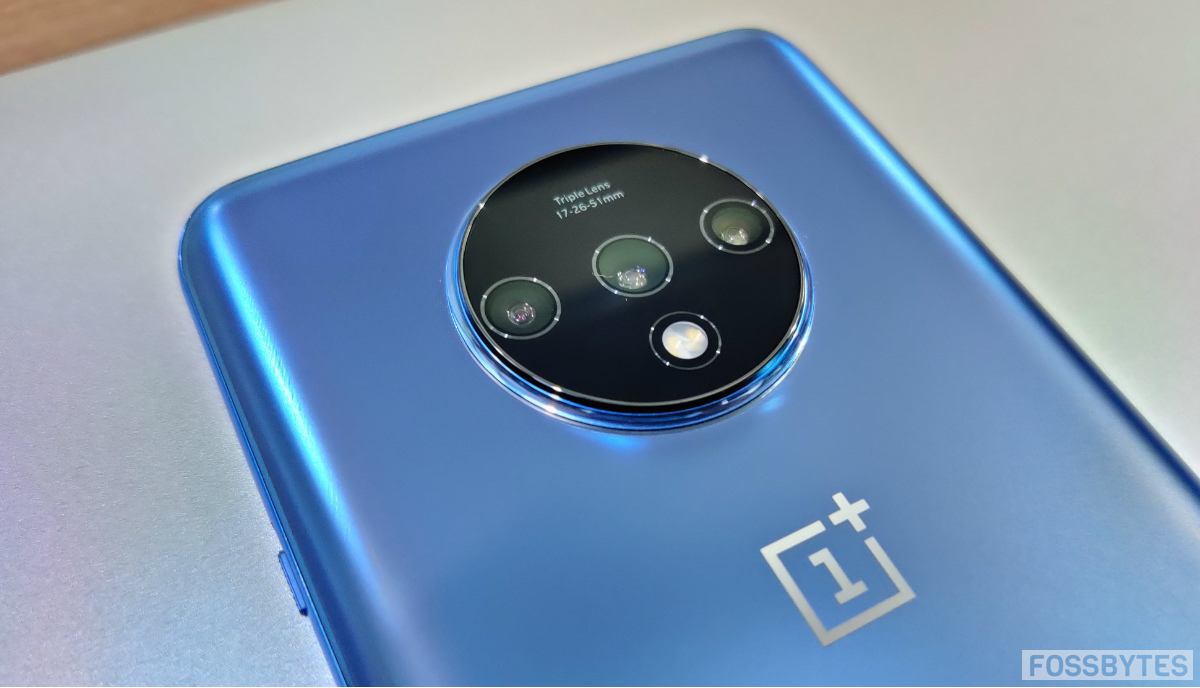It’s been almost six years since OnePlus entered the mobile market, and it’s safe to say it changed the notion that smartphones need not be expensive for being really good. Following its strategy of conducting two launch events a year, OnePlus just held its second event in 2019 and added a new device to its portfolio — the OnePlus 7T.
Getting back into the price bracket that is arguably the “OnePlus territory,” the company didn’t go for an expensive smartphone this time. However, it did go for various features, which can make us go in awe of the new device.
But are the new features capable enough to make it a smartphone worth its existence, or the OnePlus “T” lineup altogether? Read on for my OnePlus 7T review to find out:
OnePlus 7T Review
Design
As mentioned in my first impressions article, the OnePlus 7T comes with a design that no one could expect from OnePlus’ second launch of the year. Taking design cues from Motorola, the device has a distinct design, which includes a circular camera module at the back. The new design is something that most tech companies are heading for nowadays.
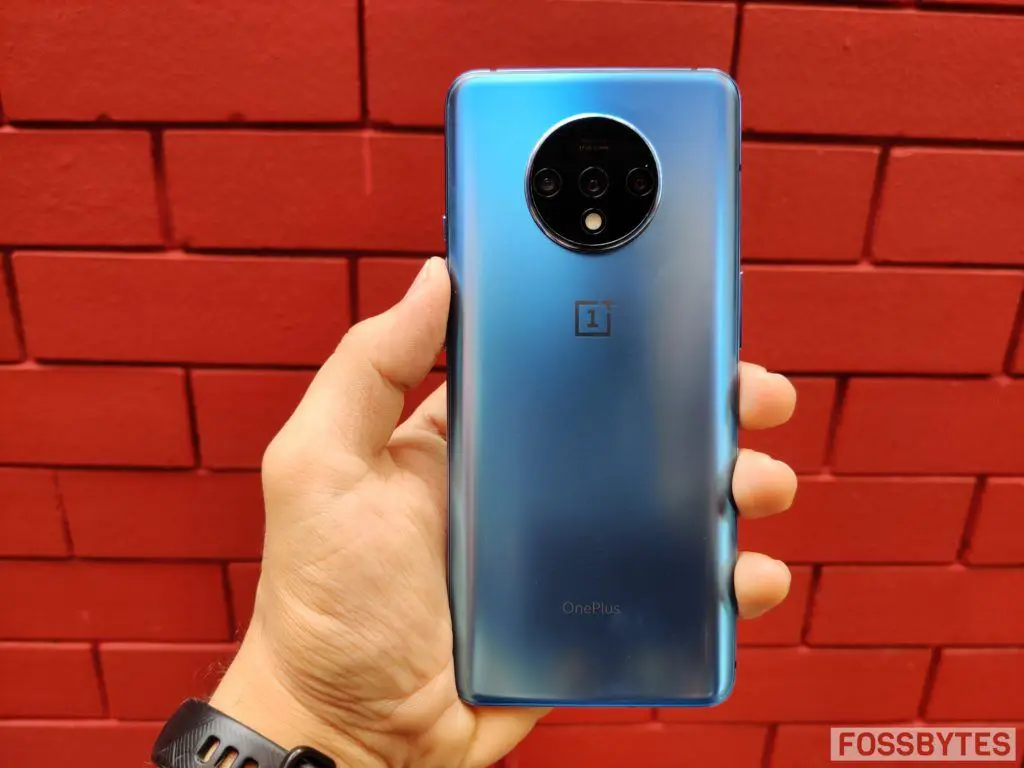
Another positive thing about the smartphone is its extremely lightweight nature, and you can feel it while using it. Although the camera setup is a refreshing one, it acts as a downside of the smartphone too. Each time you use the smartphone, you will get a constant reminder of its presence, and this could be bothersome.
For the color options, namely Glacier Blue and Frosted Silver, I love the hues at our disposal. I like the blue tone of the OnePlus 7T better than the one available for the OnePlus 7 and the OnePlus 7 Pro (Check out our review here).
The OnePlus 7T has a round camera bump at the back with three camera sensors and dual-tone LED flash. The cameras are followed by two OnePlus brandings: one in the form of a logo (in the middle) and the other in the form of the company name (at the bottom part.) With the OnePlus 7T, we get a frosted back, much like the OnePlus 7 Pro. While it is touted to be smudge-proof, you can still get some along with possible slips.
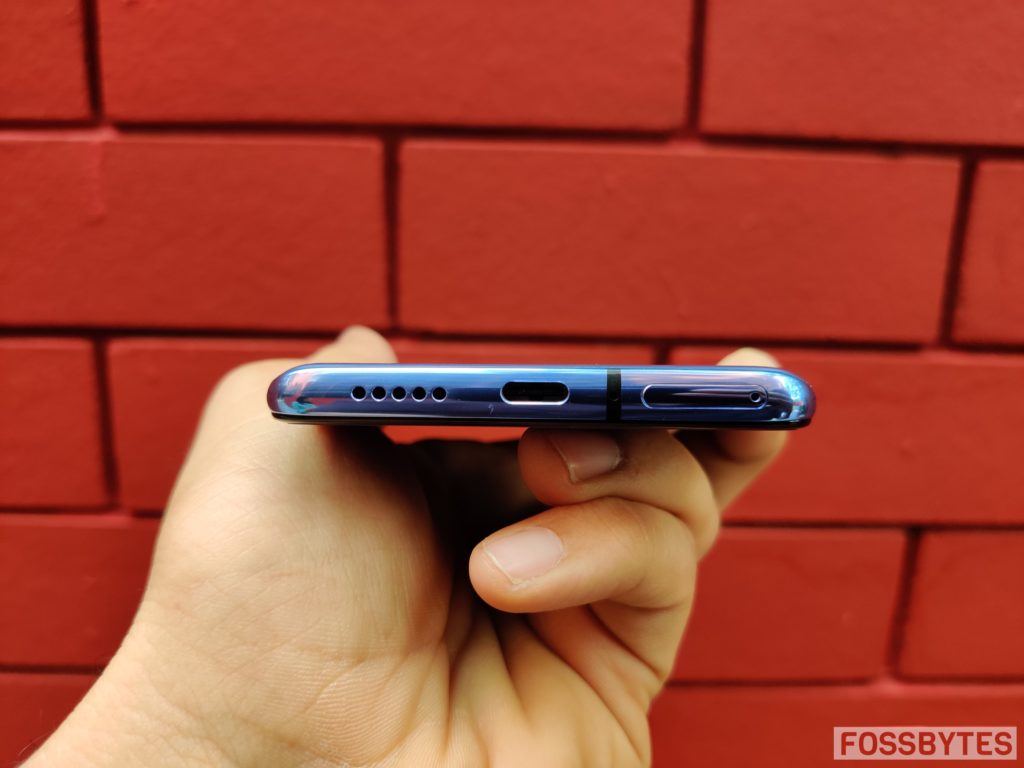
The front has a waterdrop-notched display, with minimal bezels, all due to its 20:9 aspect ratio. The left side of the device has a volume rocker, and the right side has the power on/off button and the OnePlus slider. While the top end of the smartphone has nothing on it, the bottom end has the speaker grille, the USB Type-C port, and the SIM tray. As a reminder, the OnePlus 7 Pro also has a SIM tray at its bottom end.
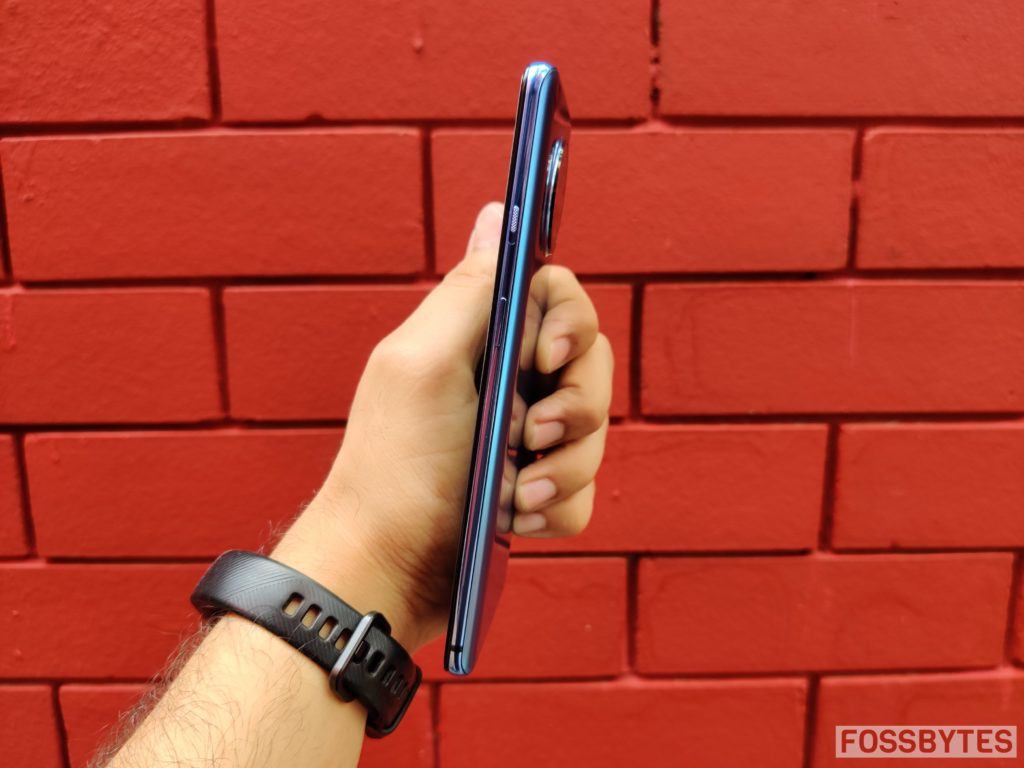
Overall, the new design is one of the attractive elements of the OnePlus 7T. To me, it proved refreshing but also obstructing. Hence, I am 50-50 about the design of the OnePlus 7T, as it is neither amazing nor disappointing.
Display
If we get into the display specifics, the OnePlus 7T has a 6.55-inch Fluid AMOLED screen with a Full HD+ resolution and a 20:9 aspect ratio. We get a 90Hz refresh rate, much like the OnePlus 7 Pro, along with HDR 10+. The OnePlus 7 Pro offers a QHD+ resolution; hence, the OnePlus 7T can prove to be slightly disappointing in that aspect.
While the display has adequate brightness and you can feel the 90Hz refresh rate and minimal bezels, the display isn’t fully bezel-less, which was something I thought the OnePlus smartphones wouldn’t feature anymore.
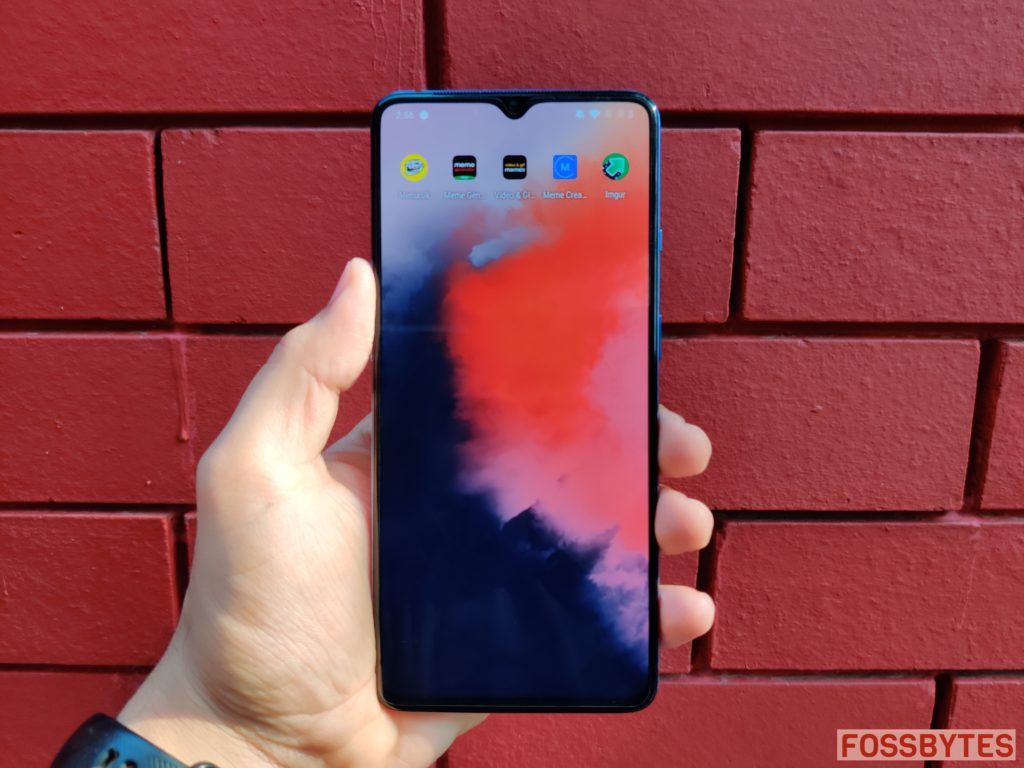
The smartphone has several display options such as Ambient display, Night mode, Reading mode, Video enhancer, Adaptive brightness, and the ability to downgrade the refresh rate to 60Hz if you need more battery backup.
Apart from the usuals, the OnePlus 7T also has an in-display fingerprint scanner, which is more or less like the one found in the OnePlus 6T/7/7 Pro. Hence, some improvement in this sector could have worked well.
I compared the OnePlus 7T with the OnePlus 7 and couldn’t spot any major differences in either of their displays. There were places where the former appeared bright, and the other places saw the latter doing well and producing enhanced video outputs.
The display of the OnePlus 7T isn’t much of a renewal that can attract a lot of eyeballs. Nonetheless, it performs decently and with a 90Hz refresh rate, it is an option for you to go for.
Cameras
Before diving into how I feel about the USP of the smartphone, I would like to throw light on the device’s camera configurations. As a reminder, it has three rear cameras: a 48MP primary sensor, a 16MP 117-degree Ultra wide-angle lens, and a 12MP telephoto lens. As for the selfies, there is a 16MP snapper, much like the previous-generation OnePlus device.
Among others, there are camera features such as OIS, EIS, dual-tone LED flash, a fixed focus for selfies, 2x zoom (and up to 10x hybrid zoom), Bokeh effect, UltraShot mode, Nightscape mode, macro photography, and 4K videos.
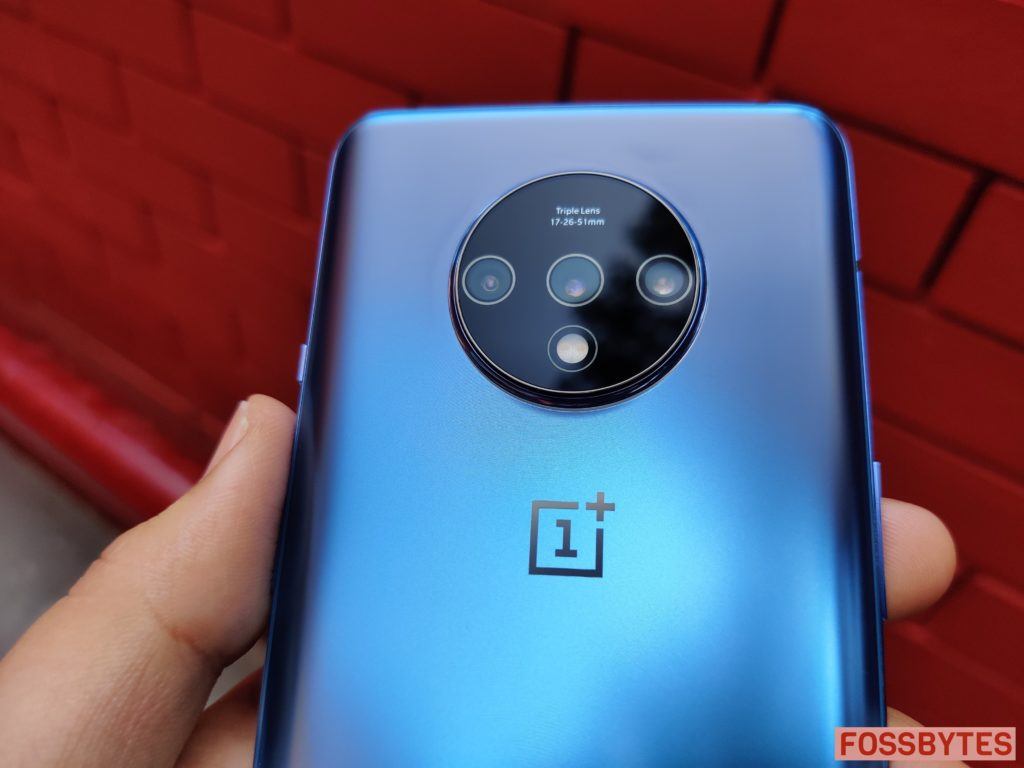
The rear cameras of the OnePlus 7T were able to perform decently and gave me resultant images that I expected. The images turned out well-enhanced and this time the OnePlus camera gave me warmer tones. This made the images more natural than processed — something that was prevalent in previous OnePlus smartphones. Additionally, the 10x zoom worked fine but it still wasn’t detailed and led to pixelated pictures.
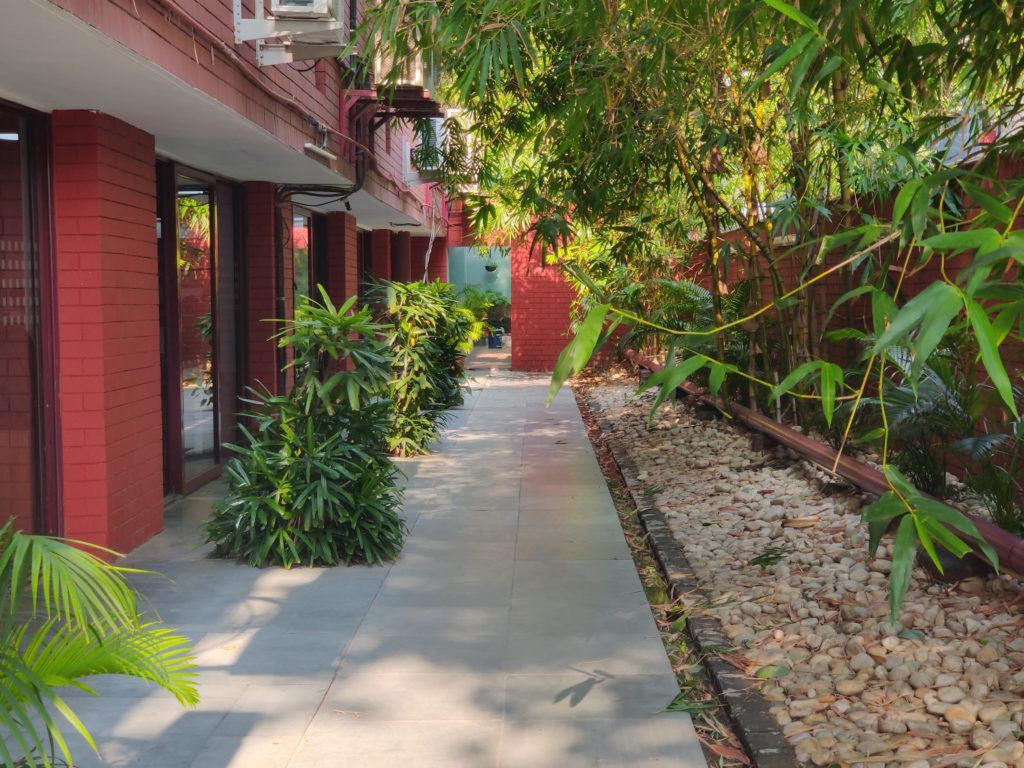
The Ultra-wide, Wide, and normal modes worked fine, but there was a problem of color shifting. I recorded videos using the Ultra wide-angle sensor (which works in 1080p), and I wasn’t very impressed.

While switching between the three camera sensors, the OnePlus 7T wasn’t able to maintain the color accuracy and I could see the color shift very easily. This was, however, not the case with the Samsung Galaxy S10+. One plus point in the case of OnePlus 7T is that its wide lens has autofocus.

On the video front, the 4K video shoot was decent. Upon enabling the Super Stable mode, I could see the difference between shaky and non-shaky videos with great ease. Hence, the feature is something I like.
The Nightscape mode was able to highlight details that were otherwise not visible in low-light photography. It performed better than the last time I used it on the OnePlus 6T.
However, there wasn’t much difference between both the Nightscape mode and the normal mode, except the former brightened the subject more. Among other things, macro photography was decent too: it could capture intricate details of a subject.

You can have a look at the camera samples of the OnePlus 7T from over here.

As for the front camera, there wasn’t much of a difference than the one found on the predecessor models, except for warm tones for selfies as well. The front portrait mode worked fine, among others.
Performance and Spec Sheet
Before I tell you about how the smartphone performed, I would like to give you a recap on the OnePlus 7T Specifications:
OnePlus 7T Spec Sheet
| Specifications | OnePlus 7T |
| Display | 6.55-inch |
| Resolution | Full HD+ Fluid AMOLED |
| Battery | 3,800mAh |
| RAM | 8GB |
| OS | Android 10 |
| Storage | 128GB/256GB |
| Rear Camera | 48MP, 12MP, 16MP |
| Front Camera | 16MP |
| Processor | Snapdragon 855 Plus |
| Phone Features | In-display fingerprint sensor, Warp Charge 30T |
| Starting Price (Current) | Rs 37,999 |
With considerable upgrades as compared to the OnePlus 7, the presence of the Snapdragon 855 Plus processor is evident. The ease of using the device is also felt due to the 90Hz refresh rate.
The OnePlus 7T was able to switch between multiple apps smoothly, even when more than 10 apps ran in the background. Various tasks such as social media surfing or even smartphone browsing took place real quick. The smartphone did not stammer during my usage.
Even though I am not a fan of gaming, I tried playing the recent Call of Duty and the gameplay was really smooth and there weren’t any lags. The smartphone was able to produce good colors and the dynamic range was good too. However, there was some screen distortion while the game was loaded.
The OnePlus 7T comes with a haptic vibrator, similar to the OnePlus 7 Pro. While it performed decently, it wasn’t as good as the 7 Pro. Among other things, the audio quality was pretty decent.
Battery and OS
As mentioned above, the OnePlus 7T has a 3,800mAh battery with support for Warp Charge 30T fast charging tech. OnePlus batteries have never disappointed me; I love how quickly they take in all their fuel and how fast charging tech helps in the process big time.
The OnePlus 7T’s battery was as wonderful as I expected it to be. It lasted more than a day (two days on standby) and was able to charge up to 75% in just 30 minutes.
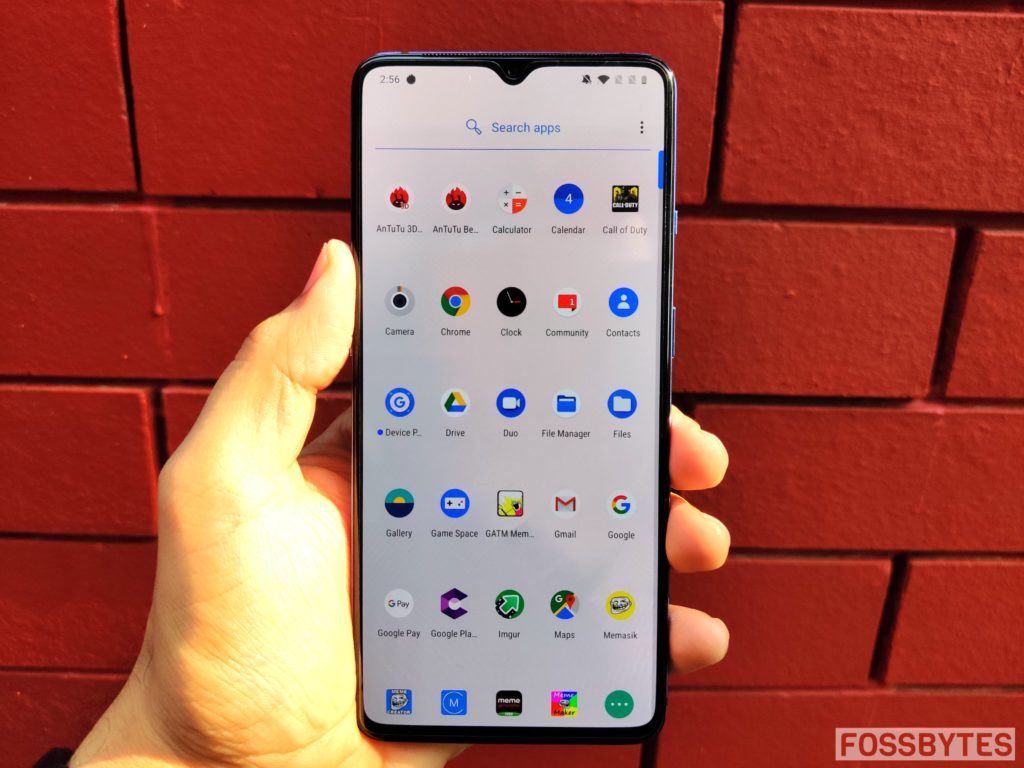
The OnePlus 7T runs Android 10 out-of-the-box (OxygenOS 10 on top), which acts as one of the highlights of the smartphone. With new features offered by Android 10, the usage becomes easy. I like the OnePlus smartphones for their UI; the OxygenOS skin doesn’t appear like an added skin and blends in seamlessly with Android. Android 10’s gesture navigation was quite nice, however, the swipe-up gesture to see the recent apps in the background didn’t work that well.
The OxygenOS 10 based on Android 10 has features such as the creation of a work profile — a new feature introduced by OnePlus. This will allow you to separate your work apps from your personal ones and not let the former bother you after work hours.
While there could be some misses on part of the OnePlus 7T, one thing I am definite about is its battery and OS.
Verdict
Although this is something I have said quite a few times, I would like to repeat it: the OnePlus 7T (starting at Rs 37,999) appears like a device that is just apt for us. While I have always questioned OnePlus’ second launch of the year (I thought it was unnecessary much like the various Samsung and Realme devices were introduced), this time I failed to do so. The OnePlus 7T is able to compete with the hefty price of the OnePlus 7 Pro, which we thought will become the standard price range of the company.
I agree that not all OnePlus 7T features act as its pillars of success, but the fact that OnePlus continues to offer good specs at below 40K is something that doesn’t question its existence in the mobile world.
Hence, the OnePlus 7T’s features are decent enough to remain in the mobile world until OnePlus serves a slightly better smartphone on our plates!

